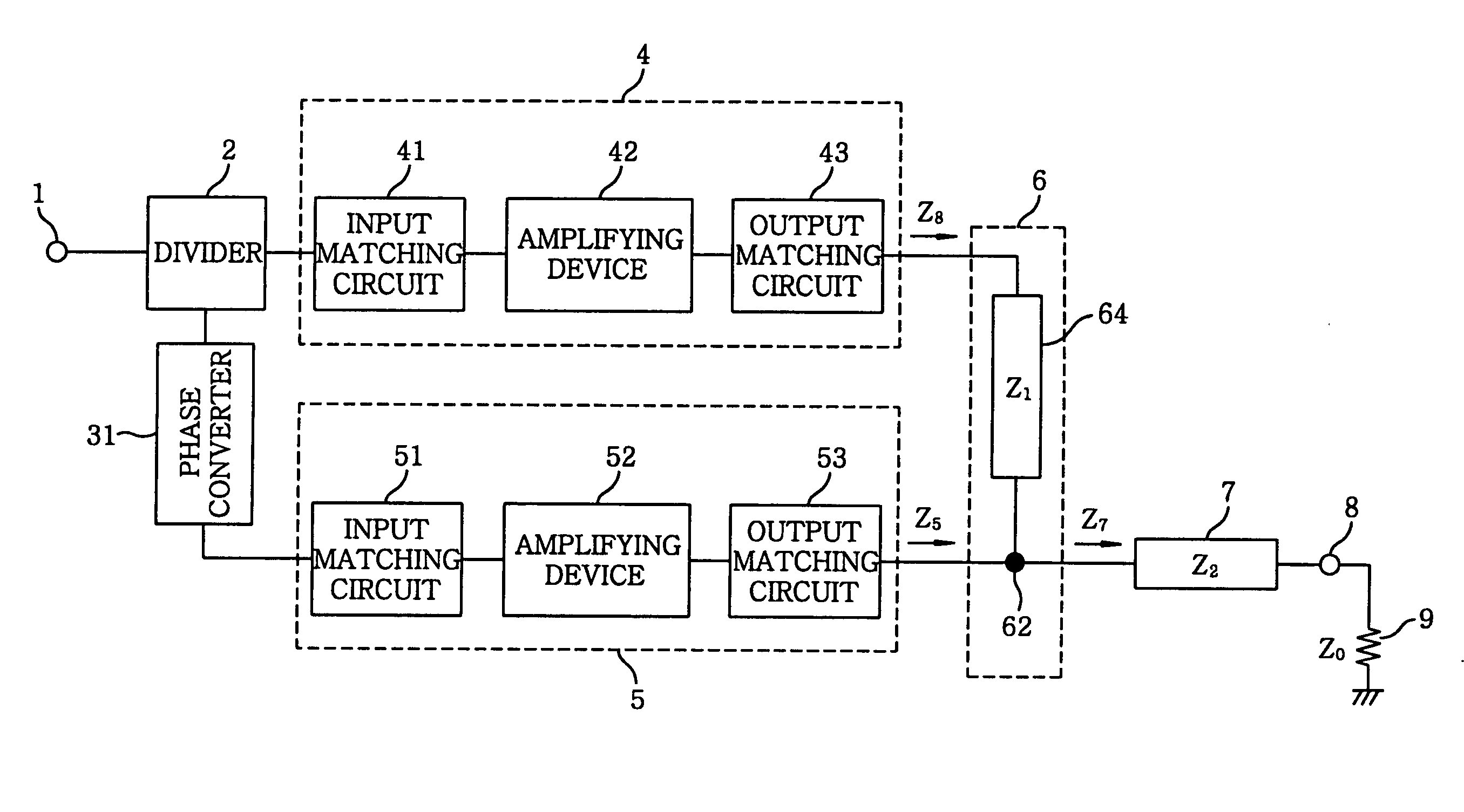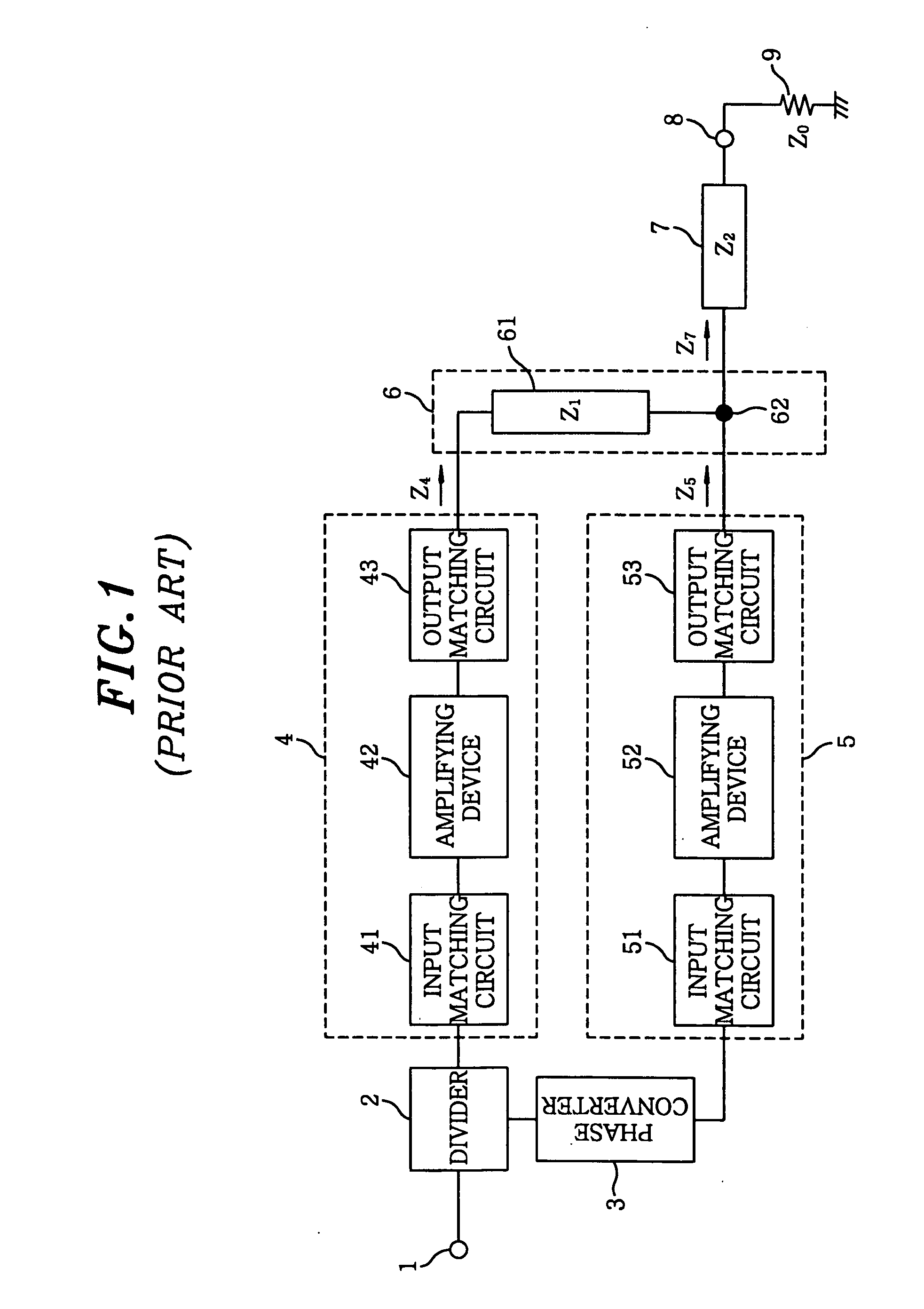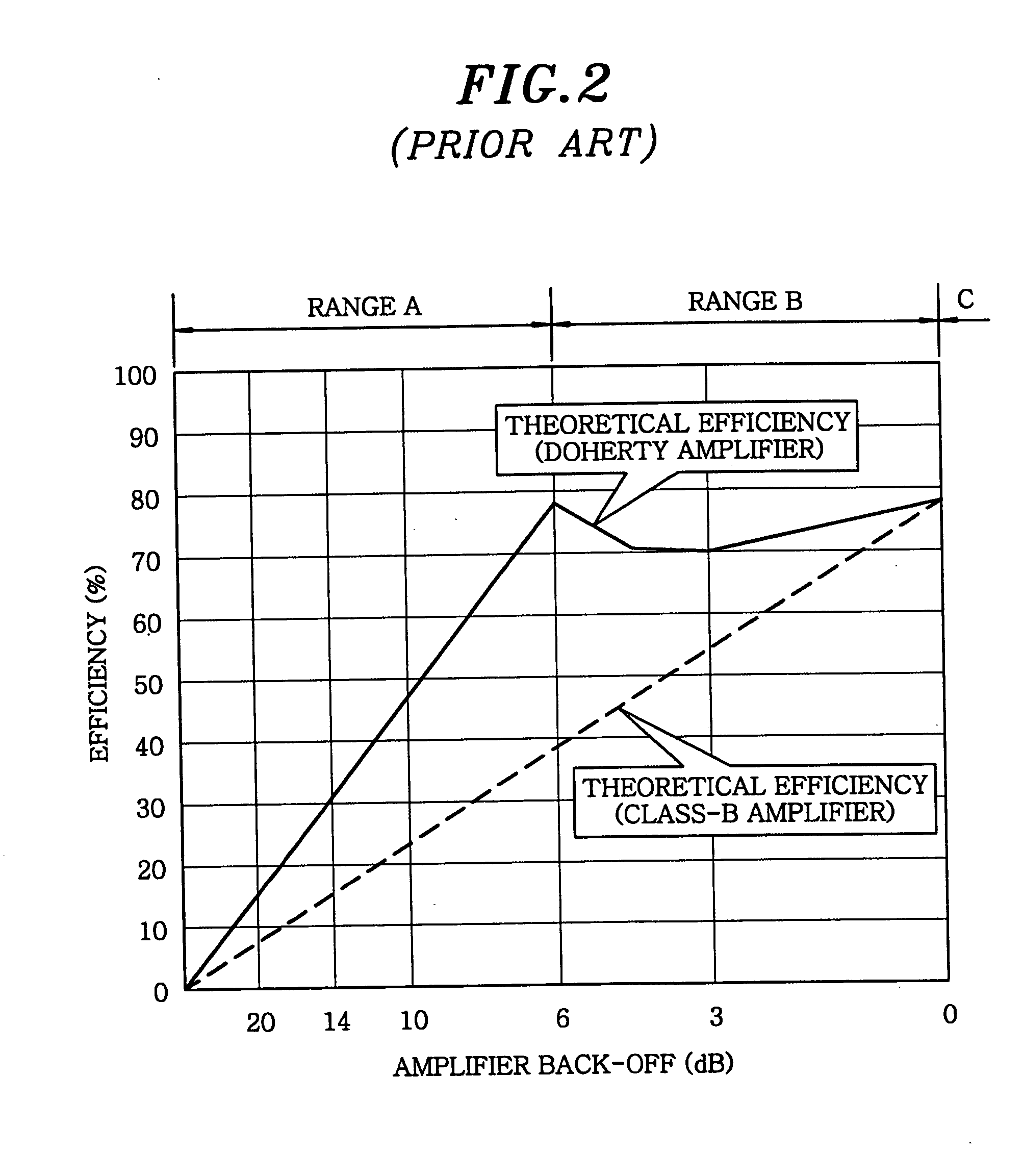Amplifier
a technology of amplifiers and amplifiers, applied in amplifiers, amplifiers with semiconductor devices/discharge tubes, amplifiers, etc., can solve the problems of difficult to adjust the impedance seen from the amplifying device b>42/b>, and achieve the effect of superior performan
- Summary
- Abstract
- Description
- Claims
- Application Information
AI Technical Summary
Benefits of technology
Problems solved by technology
Method used
Image
Examples
embodiment 1
[0078]FIG. 4 describes a configuration diagram of an amplifier in accordance with a first embodiment of the present invention. An amplifier shown in FIG. 4 differs from that shown in FIG. 1 in that the λ / 4 transformer 61 is replaced with an impedance transformer 64 configured with a piece of a transmission line of an arbitrary electrical length and the phase converter 3 is replaced with a phase converter 31. Other configurations of the amplifier shown in FIG. 4 are same as those of the amplifier shown in FIG. 1, except that specifications of some components may be different.
[0079] An input signal is inputted to an input terminal 1. The inputted signal is divided by a divider 2, which is, e.g., a 3 dB coupler or a T-branch line formed on a wiring board. The phase converter 31 is, in principle, a piece of a transmission line that can generate a delay corresponding to that of the impedance transformer 64. The phase converter 31 makes a phase of an output signal of the impedance transf...
embodiment 2
[0090]FIG. 7 illustrates a configuration diagram of an amplifier in accordance with a second embodiment of the present invention. The amplifier shown in FIG. 7 differs from that shown in FIG. 4 in that an impedance transformer 65 is connected between an output matching circuit 53 and a node 62 and the phase converter 31 is replaced with a phase converter 33. Other configurations of the amplifier shown in FIG. 7 are same as those of the amplifier shown in FIG. 4, except that specifications of some components may be different.
[0091] The impedance transformer 65 transforms an output impedance Z20 of an output matching circuit 53 into a larger value Z21 when an amplifying device 52 does not operate as an input level thereof is low, thereby suppressing a signal flowing into a carrier amplifying circuit 4. The impedance transformer 65 is, for example, of an arbitrary length of a transmission line same as an impedance transformer 64.
[0092] The phase converter 33 generates a phase delay c...
embodiment 3
[0094]FIG. 8 provides a configuration diagram of an amplifier in accordance with a third embodiment of the present invention. The amplifier shown in FIG. 8 differs from that shown in FIG. 4 in that a plurality of carrier amplifying circuits or a plurality of peak amplifying circuits are provided therein, the divider 2 is replaced with a divider 21, and the λ / 4 transformer 7 is replaced with an impedance transformer 71. Other configurations of the amplifier shown in FIG. 8 are same as those in the amplifier shown in FIG. 4, except that specifications of some components may be different. This embodiment is preferable especially when two amplifiers cannot provide a large enough output power needed.
[0095] The divider 21 divides a signal inputted to an input terminal 1 by n. 4-1, 4-2, . . . 4-k (04 in FIG. 4. 5-1, 5-2, . . . 5-m are m peak amplifying circuits corresponding to the peak amplifying circuit 5 in FIG. 4. It is also possible for 4-1 to 4-k and 5-1 to 5-m are connected to an i...
PUM
 Login to View More
Login to View More Abstract
Description
Claims
Application Information
 Login to View More
Login to View More - R&D
- Intellectual Property
- Life Sciences
- Materials
- Tech Scout
- Unparalleled Data Quality
- Higher Quality Content
- 60% Fewer Hallucinations
Browse by: Latest US Patents, China's latest patents, Technical Efficacy Thesaurus, Application Domain, Technology Topic, Popular Technical Reports.
© 2025 PatSnap. All rights reserved.Legal|Privacy policy|Modern Slavery Act Transparency Statement|Sitemap|About US| Contact US: help@patsnap.com



